Refine search
Actions for selected content:
8126 results in Fluid dynamics and solid mechanics
CORRECTION TO ‘ON THE ORDER OF MAXIMUM ERROR OF THE FINITE DIFFERENCE SOLUTIONS TO LAPLACE’S EQUATION ON RECTANGLES’
-
- Journal:
- The ANZIAM Journal / Volume 51 / Issue 1 / July 2009
- Published online by Cambridge University Press:
- 09 March 2010, p. 141
-
- Article
-
- You have access
- Export citation
TRAVELLING WAVE SOLUTIONS IN NONLOCAL REACTION–DIFFUSION SYSTEMS WITH DELAYS AND APPLICATIONS
- Part of
-
- Journal:
- The ANZIAM Journal / Volume 51 / Issue 1 / July 2009
- Published online by Cambridge University Press:
- 09 March 2010, pp. 49-66
-
- Article
-
- You have access
- Export citation
A SIMPLE ALGORITHM FOR DEDUCTION
- Part of
-
- Journal:
- The ANZIAM Journal / Volume 51 / Issue 1 / July 2009
- Published online by Cambridge University Press:
- 09 March 2010, pp. 102-122
-
- Article
-
- You have access
- Export citation
ANZ volume 51 issue 1 Cover and Back matter
-
- Journal:
- The ANZIAM Journal / Volume 51 / Issue 1 / July 2009
- Published online by Cambridge University Press:
- 09 March 2010, pp. b1-b5
-
- Article
-
- You have access
- Export citation
MIXED DELAY-DEPENDENT STABILITY OF HIGH-ORDER NEURAL NETWORKS BASED ON A WEAK COUPLING LMI SET
- Part of
-
- Journal:
- The ANZIAM Journal / Volume 51 / Issue 1 / July 2009
- Published online by Cambridge University Press:
- 09 March 2010, pp. 123-140
-
- Article
-
- You have access
- Export citation
SERIES SOLUTION OF LARGE DEFORMATION OF A BEAM WITH ARBITRARY VARIABLE CROSS SECTION UNDER AN AXIAL LOAD
- Part of
-
- Journal:
- The ANZIAM Journal / Volume 51 / Issue 1 / July 2009
- Published online by Cambridge University Press:
- 09 March 2010, pp. 10-33
-
- Article
-
- You have access
- Export citation
SHARP INTEGRAL INEQUALITIES BASED ON GENERAL TWO-POINT FORMULAE VIA AN EXTENSION OF MONTGOMERY’S IDENTITY
- Part of
-
- Journal:
- The ANZIAM Journal / Volume 51 / Issue 1 / July 2009
- Published online by Cambridge University Press:
- 09 March 2010, pp. 67-101
-
- Article
-
- You have access
- Export citation
ANZ volume 51 issue 1 Cover and Front matter
-
- Journal:
- The ANZIAM Journal / Volume 51 / Issue 1 / July 2009
- Published online by Cambridge University Press:
- 09 March 2010, pp. f1-f2
-
- Article
-
- You have access
- Export citation
AN APPROXIMATE MATRIX INVERSION PROCEDURE BY PARALLELIZATION OF THE SHERMAN–MORRISON FORMULA
-
- Journal:
- The ANZIAM Journal / Volume 51 / Issue 1 / July 2009
- Published online by Cambridge University Press:
- 09 March 2010, pp. 1-9
-
- Article
-
- You have access
- Export citation
RUIN PROBABILITIES UNDER AN OPTIMAL INVESTMENT AND PROPORTIONAL REINSURANCE POLICY IN A JUMP DIFFUSION RISK PROCESS
- Part of
-
- Journal:
- The ANZIAM Journal / Volume 51 / Issue 1 / July 2009
- Published online by Cambridge University Press:
- 09 March 2010, pp. 34-48
-
- Article
-
- You have access
- Export citation
AN ADOMIAN DECOMPOSITION METHOD FOR SOLVING LIÉNARD EQUATIONS IN GENERAL FORM
- Part of
-
- Journal:
- The ANZIAM Journal / Volume 51 / Issue 2 / October 2009
- Published online by Cambridge University Press:
- 05 March 2010, pp. 302-308
-
- Article
-
- You have access
- Export citation
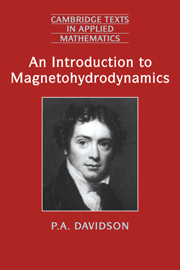
An Introduction to Magnetohydrodynamics
-
- Published online:
- 26 February 2010
- Print publication:
- 05 March 2001

Numerical Modeling of Ocean Circulation
-
- Published online:
- 19 February 2010
- Print publication:
- 18 January 2007
A SELF-REGULAR NEWTON BASED ALGORITHM FOR LINEAR OPTIMIZATION
-
- Journal:
- The ANZIAM Journal / Volume 51 / Issue 2 / October 2009
- Published online by Cambridge University Press:
- 05 February 2010, pp. 286-301
-
- Article
-
- You have access
- Export citation
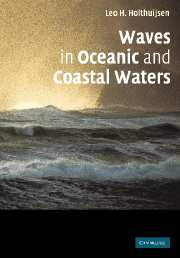
Waves in Oceanic and Coastal Waters
-
- Published online:
- 03 February 2010
- Print publication:
- 25 January 2007
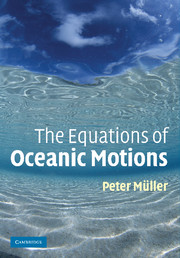
The Equations of Oceanic Motions
-
- Published online:
- 03 February 2010
- Print publication:
- 28 September 2006
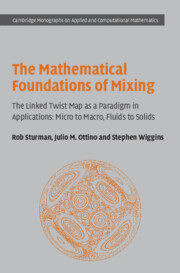
The Mathematical Foundations of Mixing
- The Linked Twist Map as a Paradigm in Applications: Micro to Macro, Fluids to Solids
-
- Published online:
- 03 February 2010
- Print publication:
- 21 September 2006
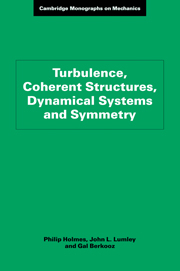
Turbulence, Coherent Structures, Dynamical Systems and Symmetry
-
- Published online:
- 03 February 2010
- Print publication:
- 10 October 1996
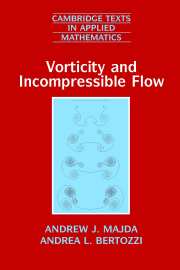
Vorticity and Incompressible Flow
-
- Published online:
- 03 February 2010
- Print publication:
- 26 November 2001

Applied Analysis of the Navier-Stokes Equations
-
- Published online:
- 02 February 2010
- Print publication:
- 28 April 1995
